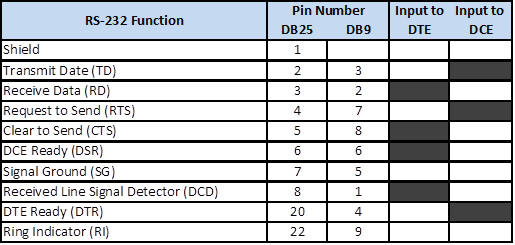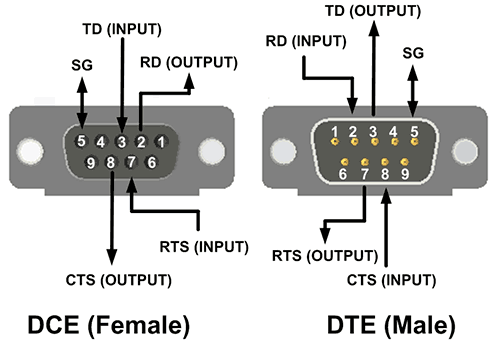Input or Output, and Other Confusing Things About RS-232
by Brian Foster
I just got off a tech call with a customer that was as confused as confused can be. All over what I thought was a simple RS-232 concept. Thinking about it now, RS-232 is actually not that intuitive or easy. For someone that grew up on the modern convenience of Ethernet, I guess RS-232 can be just plain complicated.
First off, we got this thing called a DTE or a DCE. Not so simply put, these are types of equipment – Data Terminal or Data Communications Equipment to be precise. A DTE is an end device and the DCE could be a MODEM or hub – as its name implies, it is a piece of communications equipment. The distinction is important because of the dual nature of the actual RS-232 signals. In some cases Transmit Data may be an input and in others it is an output. To those of us that have been around awhile, it is second nature. However, it can create problems to those that are unaware. The DTE is the computer or terminal that serves as the data source or the data sink. It also provides the control functions. The DTE usually has a male DB connector. The DCE is the MODEM or peripheral device. It typically has a female DB connector. Hooking up a DTE to a DCE is easy. The cabling is straight through. Pin x goes to Pin x on the other side. You run into problems when you try to hook up two DTE’s or DCE’s to each other. In this case you need to use a “Null-Modem” cable which crosses transmit and receive lines. This makes more sense if you review the following chart and connector diagram.
The bottom line is that Transmit Data is not always an output. The signals where named in relation to the sender. So the receiver receives transmit data and sends receive data. Got a headache yet?



Recommended Posts

Co-Creation, Paving the Way to a More Connected Future
November 27, 2018

The Benefits of a ‘Do It For Me’ Mentality in the IIoT
October 5, 2018

Why You Need to ‘Mind the Gap’ in Manufacturing Technology
August 31, 2018
